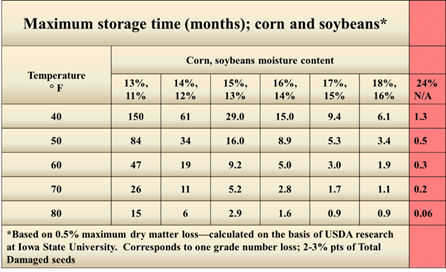Tim Burrack, an Arlington, Iowa, farmer, had less than 10 percent of his corn out of the field when he was notified that his propane order had been reduced by 60 percent. He is not alone.
Despite ample stock of propane nationally, producers and grain elevators in areas of our territory and elsewhere are struggling with local/regional supply disruptions just as propane is needed to dry and store the 2019 crop. The disruptions are compounding an already challenging growing season marked by late plantings and a delayed harvest.
“I’m in the combine, but my propane is depleted and I’m waiting on more,” said Burrack, a FCSAmerica customer. “Pipeline companies are focused on shipping butane to Chicago. There are trucks sitting 12 hours at terminals to unload corn. There are many angry people.”
Steven Johnson, Iowa Extension Farm Management specialist, said prematurely cold weather in October in many areas of the Midwest created early demand for propane to heat livestock facilities, business and homes.
In addition, according to ProFarmer, “the ONEOK Pipeline, which services the upper Corn Belt, has also suffered outages in recent weeks and is roughly two weeks behind schedule in delivering propane. A state of emergency has been declared in Iowa, Minnesota and Wisconsin. But farmers across the Midwest have reported shortages.”
The disruptions have created a division between elevators who have the ability to handle and dry wet corn and those that don’t, said Andy McKay, our agribusiness lender based in Sioux Falls, South Dakota. In his area, corn is coming out of the field at more than 20 percent moisture.
“Elevators that can take it, have five-hour waits for delivery,” McKay said. “Some terminals that can’t, are closed.”
Retail commercial lender Ryan Martenson, based in our Watertown, South Dakota, office, says things are much the same in his area.
“Crops are extremely wet. Corn in this area is 20 to 24 percent moisture. Elevators are able to get fuel, but it is coming in from other areas and there is a three- to four-and-one-half week wait. Those that can take the wet corn will have a huge year.”
 The key to storage longevity is cooling the grain before it enters the bin, said Charles Hurburgh, Iowa State University professor of agricultural and biosystems engineering. If you store at 16 to 18 percent moisture at a temperature of 80 degrees, for example, the grain will be safe for less than a month. (See Hurburgh’s chart.) But reduce the temperature to 40 degrees, and the grain will last six months.
The key to storage longevity is cooling the grain before it enters the bin, said Charles Hurburgh, Iowa State University professor of agricultural and biosystems engineering. If you store at 16 to 18 percent moisture at a temperature of 80 degrees, for example, the grain will be safe for less than a month. (See Hurburgh’s chart.) But reduce the temperature to 40 degrees, and the grain will last six months.
Prospects for cold weather this week mean it will be a good time to store grain cold enough to substantially reduce mold activity. “The key temperature to watch is actually the dewpoint (condensation temperature) because air moving through wetter material will cool by evaporation to nearly the dewpoint,” Hurburgh added.
#Harvest19 Crop Update
A little more than half the corn and three-quarters of the soybeans were harvested as of November 4, USDA reported this week. The tables below show just how much behind average corn and soybeans are.
|
CORN
|
Harvested
|
5-Year average
|
Percentage points behind
|
|
18 reporting states
|
52%
|
75%
|
23
|
|
Iowa
|
43%
|
72%
|
29
|
|
Kansas
|
83%
|
89%
|
6
|
|
Nebraska
|
60%
|
69%
|
9
|
|
South Dakota
|
27%
|
66%
|
39
|
|
SOYBEANS
|
Harvested
|
5-Year average
|
Percentage points behind
|
|
18 reporting states
|
75%
|
87%
|
12
|
|
Iowa
|
80%
|
91%
|
11
|
|
Kansas
|
70%
|
77%
|
7
|
|
Nebraska
|
94%
|
94%
|
0
|
|
South Dakota
|
82%
|
96%
|
14
|

